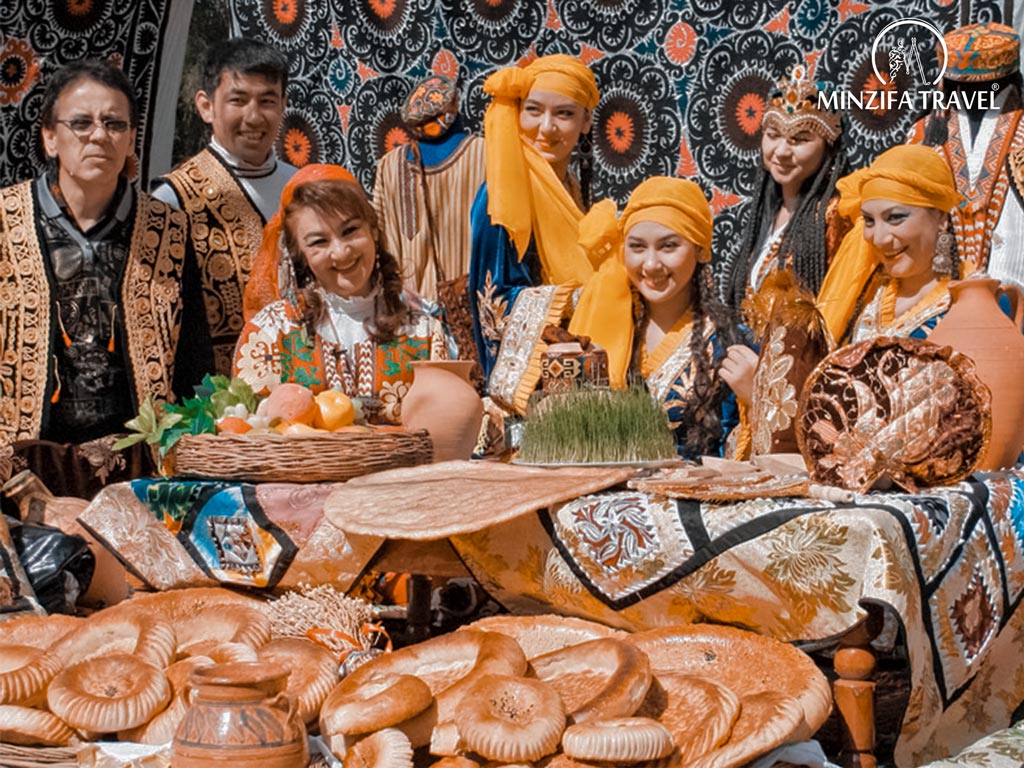The Uzbeks celebrate the New Year twice – January 1 and March 21. If with the first date everything is clear, then the second raises a lot of questions and is not familiar to everyone. For Muslims, March 21 has a special meaning, because it is the day of the vernal equinox.
The holiday is called “Nowruz,” which translates as “new day. It means that a person can start life in a new way. Nowruz is celebrated every year. On the holiday it is customary to forgive all wrongs and sins, to begin to live in love and harmony.
How the holiday came about

Nowruz goes far back in time (about 5,000 years ago). Back then, Zoroastrianism was the main world religion, there were no calendars, and people lived in perfect harmony with nature.
The feast is first mentioned in records dating back to the seventh century B.C. The writings say that on this day the shops were closed, people put all work processes aside, people treated each other and had fun.
The main spring holiday and the second Uzbek New Year encourages people to celebrate spring by honoring the basic symbols of life – water, earth, sky, animals, plants and humans.
March 21 is considered the “International Day of Nowruz,” celebrated in Uzbekistan, Kazakhstan, Kyrgyzstan, Turkey, Turkmenistan, India, Azerbaijan and Iran.
Holiday traditions

On the ancient holiday of Nowruz it is not allowed to work, so the cleaning and many household chores are done on the eve. Traditionally, the house is decorated with apple or pomegranate branches, and all clothes are washed.
The holiday traditions differ from country to country. For example:
In Uzbekistan, it is celebrated for thirteen days. The Uzbeks believe that the deeds performed on those days will accompany a person throughout the year. Locals go to visit and give each other gifts.
In Kazakhstan, the holiday is called Navryz or Ulys Kuny (translated as “First Day of the New Year”). A rich table and gifts are obligatory holiday attributes.
Kyrgyzstan celebrates Nooruz. A white tablecloth is laid on the table and guests are treated to a dish called Sumeleko.
What to fill the holiday table with

There is an amazing tradition called “Haft Shin,” according to which all dishes are made of 7 ingredients. The name of each ingredient must begin with the letter “s”. Garlic (sir) is a symbol of health, apples (sib) is a sign of beauty, herbs (sabzi) symbolize that nature awakens, etc.
On the table necessarily put a fire, a mirror and eggs, which ward off evil spirits.
The main holiday dish is sumalak made of sprouted wheat grains and flour. It is necessarily prepared with humorous chants and funny stories.
Another obligatory dish is Halisa. It consists of wheat and meat. Halisa is boiled all night in a cauldron, so that the contents turn into porridge.
It is also customary to present tortillas, bread, pastries. On Nowruz, the table is filled with many dishes, so they begin to prepare a week before the feast.
Interesting customs

A magical holiday night is the best time to read the vows. Unmarried girls throw their shoes over the fence and look where the sock points – if in the direction of the house, it means she will live another year unmarried, if in the opposite direction – waiting for marriage.
One of the most amazing customs is that with the advent of Nowruz, people begin to eavesdrop on their neighbors’ conversations. It is believed that what is overheard will happen in the coming year.
There is a kind and interesting custom associated with nature – on the day of the holiday people plant trees. If there is a dry tree, they do not cut it down, but give it a second chance.
That’s how Nowruz is an unusual and interesting holiday. If you want to be in this atmosphere and fully experience the holiday spirit we invite you to go on a spring tour to Uzbekistan with our tour operator. A few happy days in the oriental fairy tale will give you a lot of pleasant impressions and emotions.

